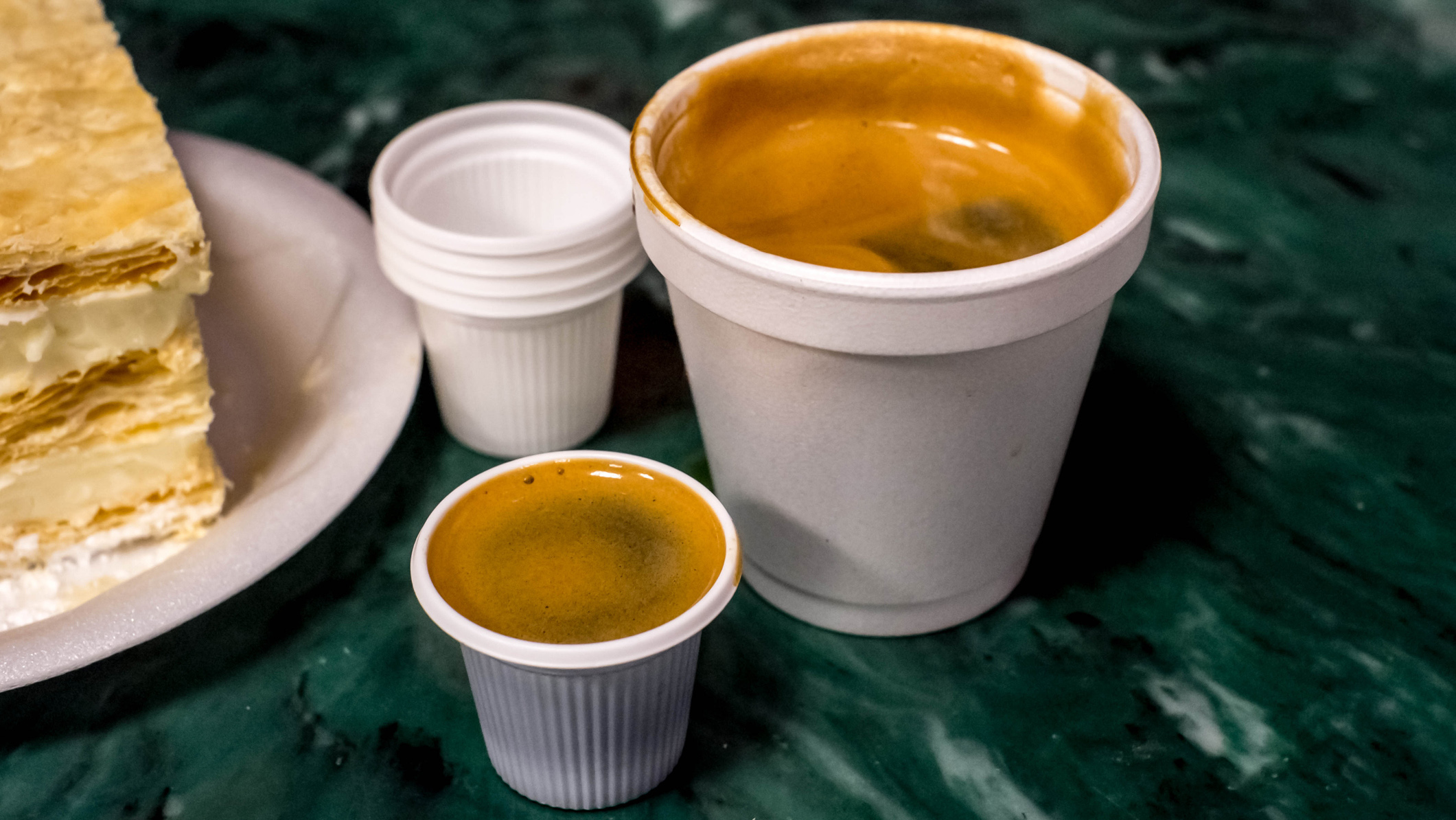In South Florida, People Think Cuban Coffee Is Superior—and They're Right
We may receive a commission on purchases made from links.
All coffee is not created equal. I would know because I live in Miami where people drink a dark-roasted blend from miniature cups barely larger than creamer containers. It's Cuban coffee and it's hot and ready-made.
The city runs on this stuff. It's our high-octane gasoline. One could say it's an arbiter of immersion into Miami culture—an indication of one's stature amongst longtime residents. I knew I'd made friends when Carlito from the sales department began regularly offering me shots of his colada, the small four-ounce cup of Cuban coffee meant for multiple servings.
An outsider might think themselves thoughtful to bring their mobile app-ordered coffee to the office. And while I might crack a smile, I really hate your Starbucks, Karen. Why? Because it tastes like water. Some Miamians go as far as to say it tastes like dirt.
I won't disparage café Americano and compare it to soil. But the taste—usually acrid with a terrible earthy aftertaste that settles into the tongue—certainly pales in comparison.
On the other hand, when prepared properly, there's no such thing—in my opinion—as an offensive cup of Cuban coffee. The bitterness of a strong espresso is overpowered in Cuban coffee by the sweetness of espuma, or foam. Caramel in color, that special film is created from a process that involves pouring the first drops of brewed espresso into ample sugar (approximately one tablespoon for every two cups of coffee), then whipped with vigor into a light froth. It contributes to Cuban coffee's smooth finish.
Don't like coffee too sweet? Too bad. Cuban coffee is unabashedly strong, slightly syrupy, and meant to be consumed fresh. At a ventanita—the small window stalls where Cuban coffee is sold—a waitress may add an extra teaspoon before handing over a cup. (And sure, this stuff can be made at home to accommodate personal preferences. All it takes is an espresso maker and a can of Café Bustelo or Cafe La Llave.)
Marta Darby considers herself 100 percent American and 100 percent Cuban. When she's not writing for her blog, My Big Fat Cuban Family, she might be railing against American coffee beverages, which she likens to "coffee milkshakes." Ask her about her earliest memory of Cuban coffee and she'll answer that she's pretty sure it was warm milk, coffee and sugar... in her baby bottle.
I can't tell if she's joking, but I get the sense that the smell of espresso brewing is a footnote in her most cherished memories. It's an understatement to say coffee is embedded in Cuban and, by extension, Miami culture. "You go to someone's house and if they're Cuban, they're going to serve you the coffee," Darby said. "It was just lovely. Our own cultural language."
Spanish is the default language at most Miami ventanitas. Versailles, located on Miami's Calle Ocho, offers the most famous version and attracts both locals and tourists. On a Tuesday morning, though, I find mostly locals. The most respected women on the block are the three waitresses manning the ventanita, controlling a small crowd and addressing regulars by name. There's no line, even when there are up to ten people waiting.

Patrons take their time—mostly to chat or just wake up while taking up the ambiance. One man enjoys his coffee while pulling puffs from a thick Cuban cigar. A Miami-Dade County officer orders a cup of cafe con leche to go, while a woman reaches over the counter for her box of flaky Cuban pastries. A man standing to my right cautions me to finish my cafecito, a single serving of Cuban coffee, before it chills. Another compliments my best attempt at Spanish and suggests I try my cup with some evaporated milk. The percussive sounds of Cuban salsa waft into the distance.
On 8th Street between South Beach and the Everglades, there are about 60 ventanitas. That translates to about one every block, said Jacob Katel, author and photographer. He spent six weeks documenting Miami through the lens of its ventanitas in the book "Cuban Coffee Windows of Miami."
At these ventanitas, Katel believes Cuban coffees only add to that potent stew of Caribbean and Latin cultures that imbues the Miami life: "Jamaican patties right next to the empanadas, Inca Cola right next to the Coca-Cola, the Dominican cigars right next to the Marlboros, and all of the best tickets in the Florida lottery."
I agree. But then he says since everyone drinks coffee and because South Florida's not the only place that has a "walk-up window phenomenon," the ventanita experience could be replicated elsewhere.
I'm not so sure.
